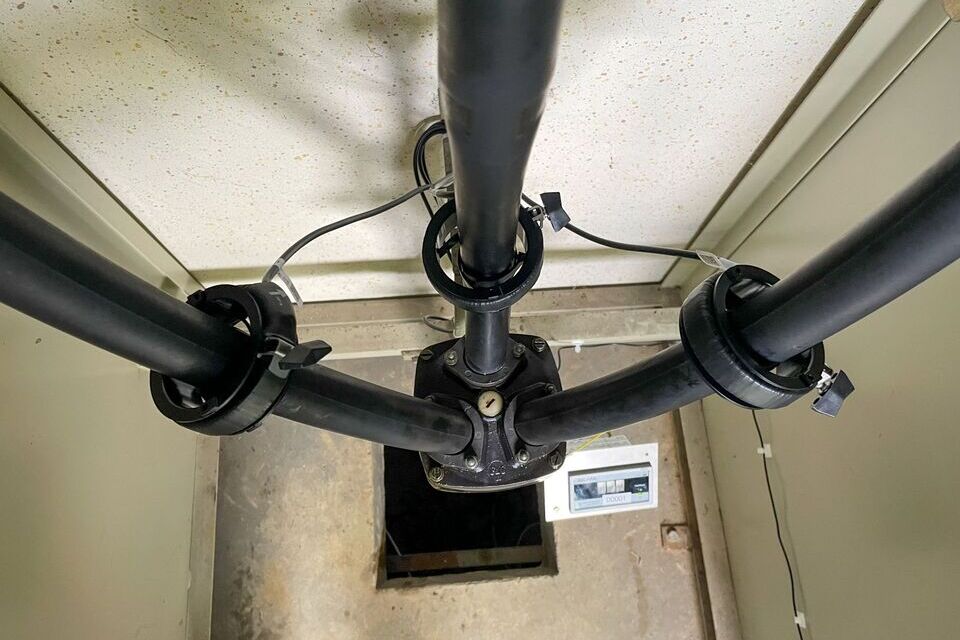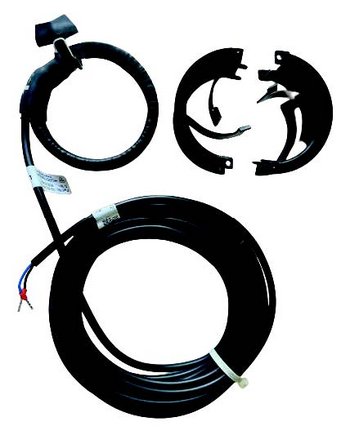Digitalisation of grids through retrofit measures

Integration of old PILC underground cables into smart grid environments with CSOR current sensor brackets
EWR GmbH upgrades medium-voltage cables with an innovative solution from Horstmann
EWR GmbH has further digitalised its medium-voltage grid with a modern retrofit strategy. By introducing the CSOR current sensor brackets, an innovative technology from Horstmann, old Paper-Insulated Lead-Covered (PILC) cables can be connected to modern short-circuit indicators and monitored via LoRaWAN. The monitoring of this type of cable was previously difficult to integrate into advanced network monitoring systems due to technical limitations.
Disadvantages of PILC cables
The structural integrity of traditional PILC cables remains intact as long as they rest immobile in the ground. However, mechanical shocks or vibrations due to earthworks in the vicinity, or movements caused by frost during the winter, can damage this type of cable. As a result, dangerous short-circuits can occur, leading to widespread power outages and requiring an immediate response from network operators like EWR.
Challenge: integrating old PILC cables into smart grid environments
Frank Aschenbroich, Head of Electricity Technology at EWR, explains: "As a grid operator, it is our job to guarantee a secure and
modern supply standard at all times. This also includes the task of digitalising our electricity grid."
The digitalisation of monitoring short-circuit indicators installed on PILC cables was previously a complex undertaking that was both time-consuming and cost-intensive. As the individual conductors above the pothead of the F&G SKV cable termination are not touch-proof, it was impossible to install short-circuit indicators with standard current sensors. Either the conductors were converted to XLPE cables which required introducing additional cable joints, or special short-circuit indicators, like fluid indicators or indicators with fibre optic connection, had to be used. However, fluid indicators have to be read locally which requires a site visit, while short-circuit indicators with fibre optic connections have to be equipped with an expensive telecontrol system for remote reading.
Solution: CSOR special bracket and LoRaWAN
"Horstmann's new solution for connecting PILC cables to the LoRaWAN network has now made a major digitalisation step economically feasible for us," says Dirk Reinholz, Head of Electricity Operations.
This innovative step is a symbol of the transformation of challenges into opportunities. With this retrofit measure, EWR GmbH contributes to the sustainable strengthening of the regional energy infrastructure. EWR GmbH pushes ahead with the transformation of its medium-voltage substations with a focus on increasing efficiency, reducing costs and ensuring safety.
Firstly, the specially developed CSOR current sensor brackets are attached to the insulated, unscreened individual conductors above the oil-filled pothead. In the second step, the current sensors are installed over these brackets.

The current sensors are connected to a Sigma F+E 3 L short-circuit indicator, which promptly transmits detected short-circuit events directly to the control centre. This transmission occurs through a LoRaWAN network, ideal for efficiently transporting small data volumes over considerable distances. A notable advantage is the integration of the LoRaWAN transmission module within the Sigma R+D 3 L short-circuit indicators, simplifying deployment. Network managers receive comprehensive event notifications via email from the control centre.

Horstmann's innovative CSOR special brackets now pave the way for simple and economical digitalisation of medium-voltage networks with PILC cables. A two-part bracket enables retrofit installation of current sensors around single unscreened conductors with diameters up to 45 mm. The type-tested design consisting of sensor and bracket allows partial discharge-free operation for nominal voltages up to 11kV. The entire installation only takes around 30 minutes per cable, and is therefore considerably faster and more cost-effective than all previous solutions.
The advantages of CSOR and LoRaWan at a glance
✅ Safe application: type-tested retrofit option
✅ Cost savings: Simple, compact installation without reconstruction measures
✅ Time saving: quick installation
✅ Flexible application options for all common earth cables
✅ Universally applicable: Suitable for all ComPass and Sigma devices
Summary
EWR GmbH has implemented an innovative solution from Horstmann to digitally integrate old PILC cables in the Remscheid power grid and monitor them via LoRaWAN. Until now, it has been difficult to integrate these cables into modern smart grid monitoring systems as PILC cables are not safe to touch, and it was not possible to install short-circuit indicators with current sensors. Thanks to the special CSOR bracket, a modern short-circuit indicator can now be connected to these cables, which reports short-circuit events via LoRaWAN. This solution enables fast, safe, and cost-effective retrofitting of existing medium-voltage substations, which represents a significant step in the digitalisation and sustainable development of the urban energy infrastructure.